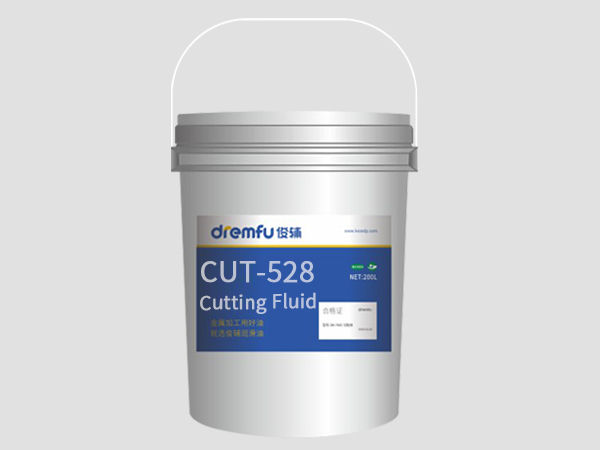2025-02-21 22:41:44
The specific role of Universal Micro-emulsion Cutting Fluid in CNC Machines
Universal Micro-emulsion Cutting Fluid, especially CUT-528 Cutting Fluid, plays a vital role in CNC (computer numerical control) machine tools. It is not only a lubricant and coolant in the processing process, but also can improve processing accuracy, extend tool life and improve product quality. The following is a detailed introduction to its specific role in CNC processing.

Lubrication effect:
During CNC processing, strong friction will occur between the tool and the workpiece surface. CUT-528 Cutting Fluid reduces the friction between the tool and the workpiece by providing efficient lubrication. Good lubrication can effectively reduce tool wear and reduce cutting force, thereby improving processing accuracy and surface quality. In addition, it can prevent tool overheating, sticking or sintering, and ensure the smooth progress of the cutting process.
Cooling effect:
During CNC processing, a large amount of heat will be generated due to high-speed cutting. If the heat is not dissipated in time, the high temperature of the tool and workpiece surface will affect the processing quality and even damage the tool. CUT-528 cutting fluid can quickly take away the heat in the cutting process through its microemulsion characteristics, keeping the tool and workpiece within the appropriate temperature range. The cooling effect not only avoids overheating problems, but also helps maintain the stability of the cutting process, improving the efficiency and accuracy of processing.
Anti-rust effect:
During the cutting process, especially when processing metals such as iron and aluminum, oxidation and corrosion are prone to occur. CUT-528 cutting fluid adds high-quality rust inhibitors, which can form a protective film on the surface of the tool and workpiece, effectively preventing moisture and oxygen in the air from contacting the metal and preventing rust. This function is very important for improving the surface quality of the workpiece and reducing subsequent cleaning work.
Improve processing accuracy:
Due to good lubrication and cooling, CUT-528 cutting fluid can effectively reduce processing errors caused by increased temperature and friction, thereby ensuring high-precision processing results. Precise temperature control and stable cutting conditions help achieve smaller tolerances and better surface finish in CNC processing.
Extend tool life:
The lubricating effect of cutting fluid not only reduces the friction between the tool and the workpiece, but also effectively reduces the wear on the tool surface. CUT-528 greatly extends the service life of the tool by reducing friction and avoiding damage to the tool by high temperature. Longer tool life reduces the frequency of replacement in production and saves production costs.
Reduce the frequency of oil replacement:
The stable performance of CUT-528 cutting fluid means that it can maintain a longer service life. Compared with traditional cutting fluids, the use of CUT-528 can reduce the frequency of oil replacement and reduce maintenance and management costs. This not only reduces the maintenance workload of the production line, but also improves operational efficiency.
Environmental protection:
CUT-528 cutting fluid adopts advanced microemulsion technology, which reduces the harmful chemical components that may exist in traditional cutting fluids. It is non-toxic and non-irritating, and is more friendly to the health of operators. Its environmental protection characteristics help reduce pollution to the environment and meet the requirements of modern manufacturing for green production.
In general, CUT-528 Universal Micro-emulsion Cutting Fluid plays a multifaceted role in CNC machine tools. It not only improves processing efficiency and product quality by providing excellent lubrication, cooling and rust prevention functions, but also extends the service life of the tool and reduces operating and maintenance costs. This makes it an indispensable auxiliary material in modern precision machining.